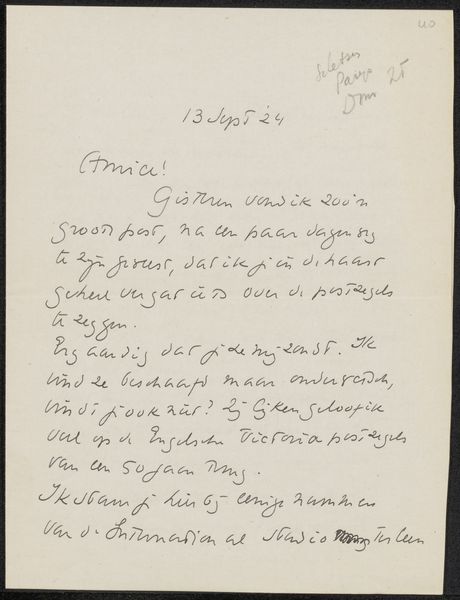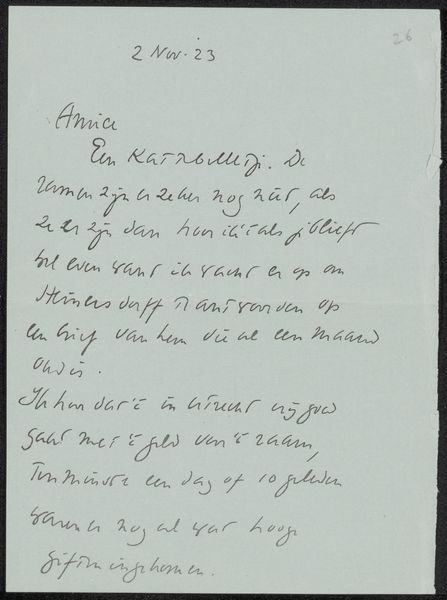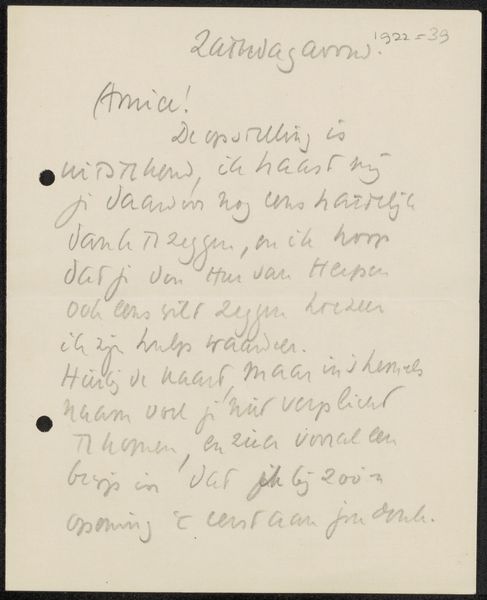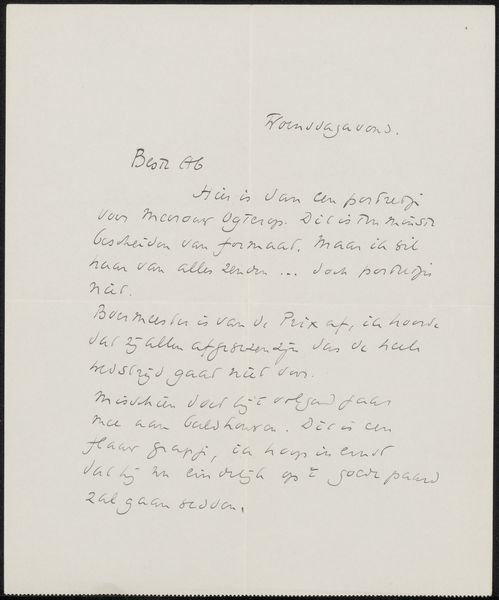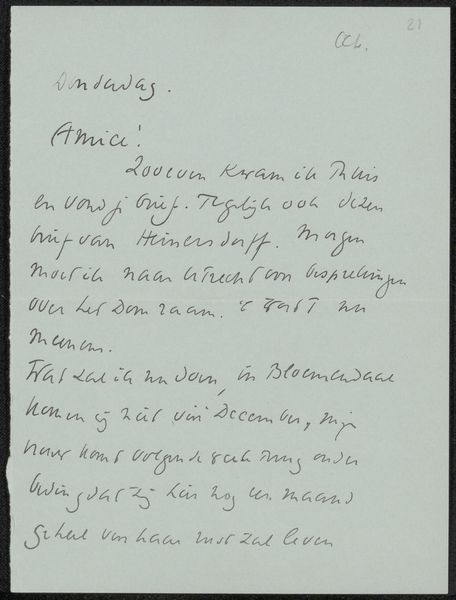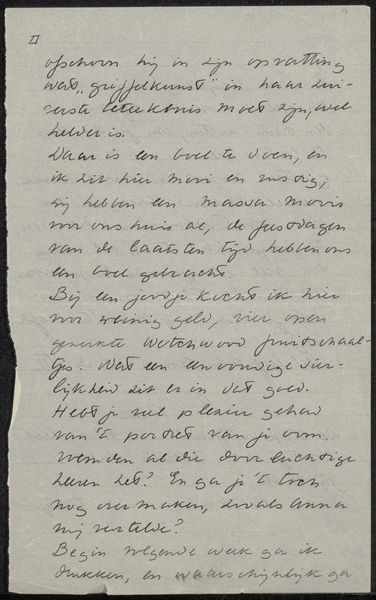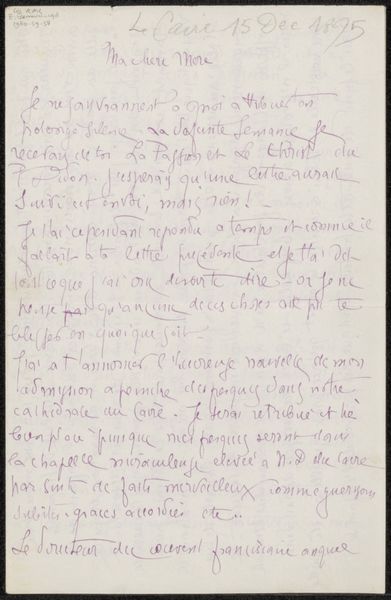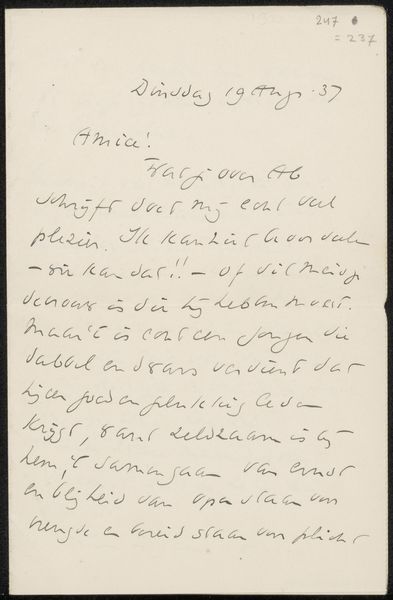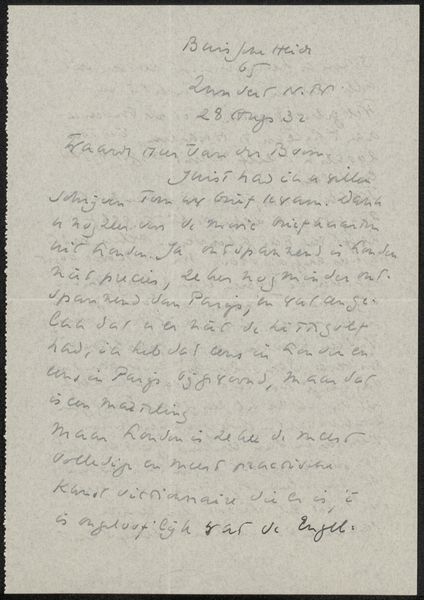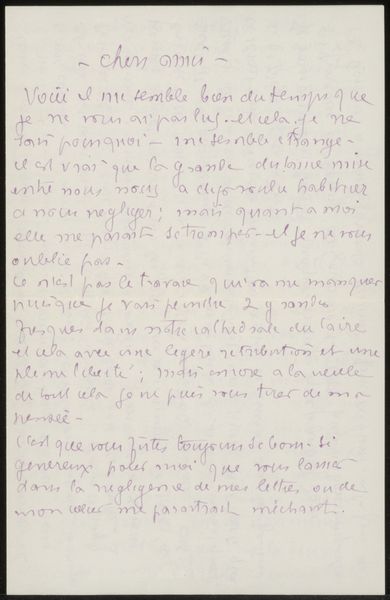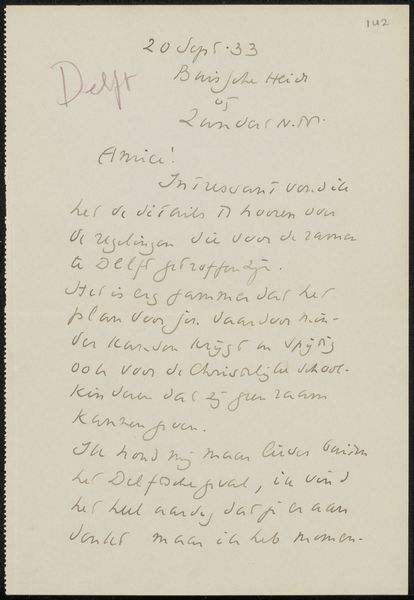
drawing, paper, ink, pencil
#
drawing
#
dutch-golden-age
#
paper
#
ink
#
intimism
#
pencil
Copyright: Rijks Museum: Open Domain
Curator: Here we have a fascinating piece, "Brief aan Willem Bogtman," attributed to Richard Nicolaüs Roland Holst, possibly dating from 1923. It resides in the Rijksmuseum. Editor: The letter, immediately, has such intimacy about it; it looks like a candid expression. The handwritten script, the faint pencil on what seems like simple paper, it feels immediate and almost raw. It doesn't scream for attention, does it? Curator: It is a drawing rendered in pencil and ink on paper. Roland Holst was a man of many talents, active in the Dutch arts and crafts movement and deeply involved with socialist ideals. It's just an artifact, made using only raw material but its contents point beyond such humble roots, don't you agree? Editor: Absolutely. You can see a direct connection, a very basic connection, from the writing implement to paper—labor transformed to inscription. A piece like this throws into stark relief how everyday objects were used to create these highly evocative messages that we now preserve. What does the letter even say? Curator: The letter begins "Amici" which translates to "friends." Based on the transcription, it touches upon daily occurrences, travels, perhaps concerns or observations of the time. Editor: So interesting how the value has changed over the centuries. This paper in Holst's time probably held little monetary worth; the words imprinted carried all meaning, now those simple means command a fortune. Has something as pure as written text become an icon for capitalist greed? Curator: Perhaps… Or, and I feel a kinship when approaching work in a socialist vein, perhaps now we finally have a better idea about how all forms of creation ought to be rewarded: justly! But it strikes me how something made so deliberately, for direct communication, has ended up in a museum for posterity. Editor: You're right. Its transformation is more than just monetary. It shows the complicated life of a medium which itself becomes subject to market fluctuations. Curator: So this humble letter shows us the social and material dimensions in dialogue; in that light, it is pretty rich for something scribbled on a small sheet of paper! Editor: Indeed. Each stroke reveals labor, context, emotion, and maybe the real value comes from observing it across these many facets.
Comments
No comments
Be the first to comment and join the conversation on the ultimate creative platform.
